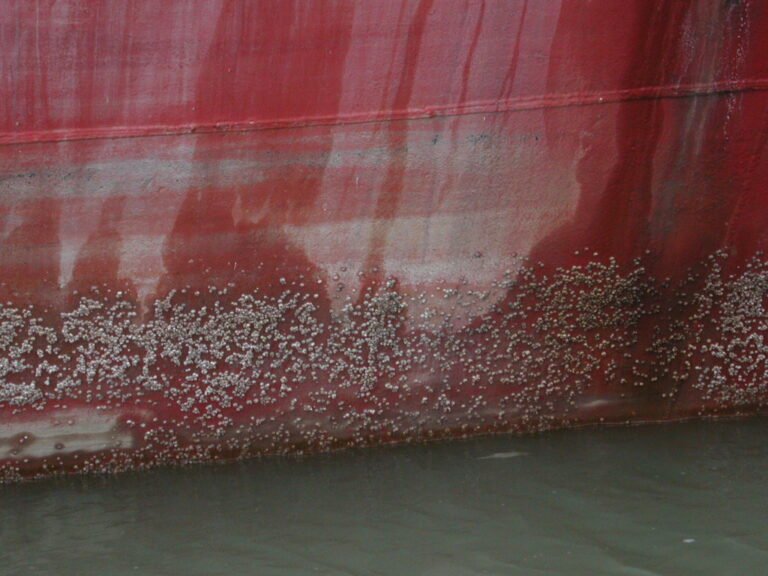The Impact of Barnacle Biofouling on Shipping Decarbonization Efforts
High levels of barnacle biofouling on underwater hulls across the global shipping fleet can significantly drag down decarbonization efforts and increase fuel costs, a new study found.
The research study, titled ‘How much could barnacles limit shipping’s decarbonisation?’, published by I-Tech, a developer of the barnacle-repelling antifouling technology, details how over one-third of vessels in a 685-sample group sailed into dry dock with barnacles covering more than 10% of their hull surface.
More alarmingly, more than one fifth of vessels inspected in the sample group were found to have over 20% of their underwater hull surface covered with barnacle biofouling; whereas only 140 vessels inspected had the optimal condition of less than 0.1% barnacle biofouling coverage.
The extensive data analysis that sits at the core of the new research study was conducted by an independent marine coatings consultancy group based on data collected from 685 vessel hull condition inspections undertaken between 2015-2025 on the majority of vessel types, with a range of trading activity levels.
While this sample group is relatively small in comparison to the 55,000 merchant ships trading internationally, the high prevalence of barnacle biofouling found on this sample group of vessels gives indicative insight that should be of great concern to the industry considering the immense negative impact barnacle biofouling has on increasing vessel emissions.
Barnacle biofouling was found on all vessel types, however, it was present on tankers more than on other ship types. For example, almost 90% of tankers were found to have barnacle biofouling present on their underwater hull with varying intensity, compared to around 70% of pure car carriers and container ships inspected.
It was also clear that lower activity vessels are at greater risk and barnacle biofouling is more prevalent on the flat bottom area compared to vertical sides or boottop hull areas. Variations in barnacle biofouling between vessel types can be attributable to a certain degree to different root causes; different paint systems, speed, activity and route. However, the presence of more than 10% barnacle biofouling coverage can result in significant added resistance, with 36% more shaft power required to maintain the same speed through water. This has a significant negative impact on a vessel’s fuel use and subsequent emissions to air.
Extrapolating from published data taken from a 2011 study by Michael P. Schultz, this level of hard biofouling could be responsible for at least 110 million tonnes of excess carbon emissions per year, and an additional $15 billion spent for the global commercial fleet. The true figure is likely to be higher, as this is a conservative calculation based on today’s low sulphur fuel oil prices and only assumes a 10% coverage of hard biofouling. Therefore, the significant extent of hard fouling found across this sample of group of 685 vessels in the research study demonstrates the magnitude of unnecessary demand being placed on engines because of barnacle biofouling, increasing fuel consumption and emissions, and exacerbating speed losses due to increased hydrodynamic drag.
“The findings that more than one fifth of vessels in this study had more than 20% barnacle biofouling is concerning. This reinforces the fact that antifouling coating systems with good static performance, boosted by the presence of biocides that target hard fouling, even under extended static conditions, are an absolute necessity if barnacle fouling is to be reduced to much lower levels on a global fleet scale,” Markus Hoffmann, Technical Director at I-Tech, commented.
From the conclusions drawn in the research study, I-Tech’s advice for ship owners and/or operators includes using careful consideration of hard biofouling protection components during the antifouling coating selection process. Ensuring adequate hard biofouling protection, for all vessels, but particularly those at risk of longer idling periods while in service, is essential for the adequate protection of the global shipping fleet from barnacle biofouling, according to the company.

